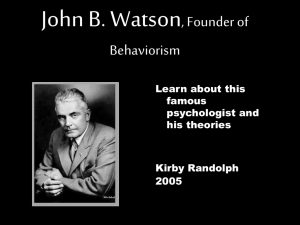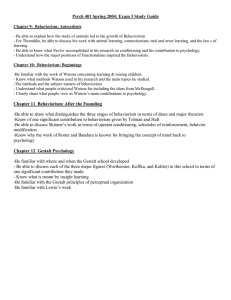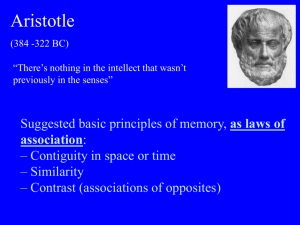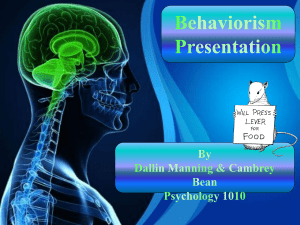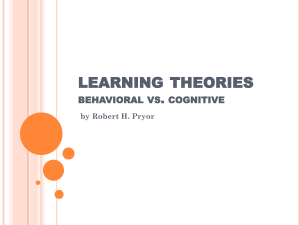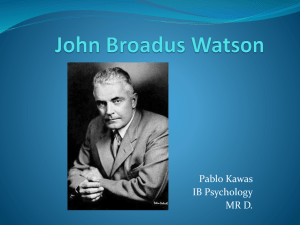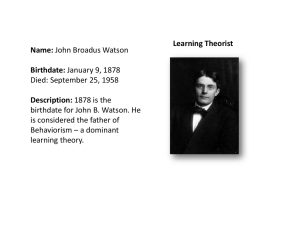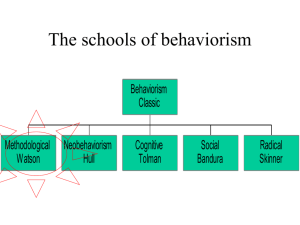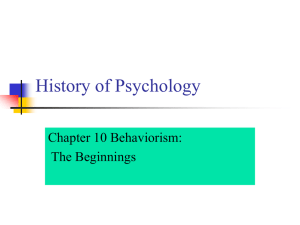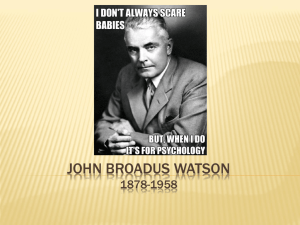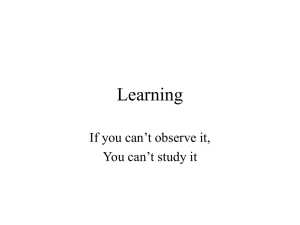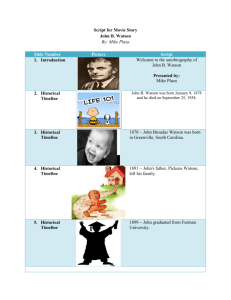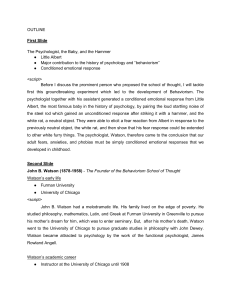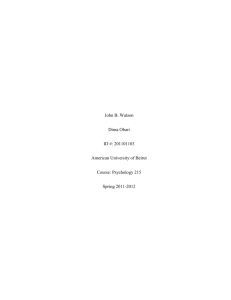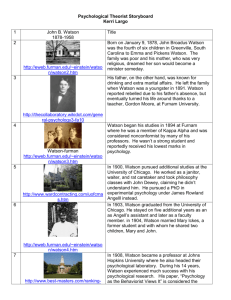John B. Watson
advertisement
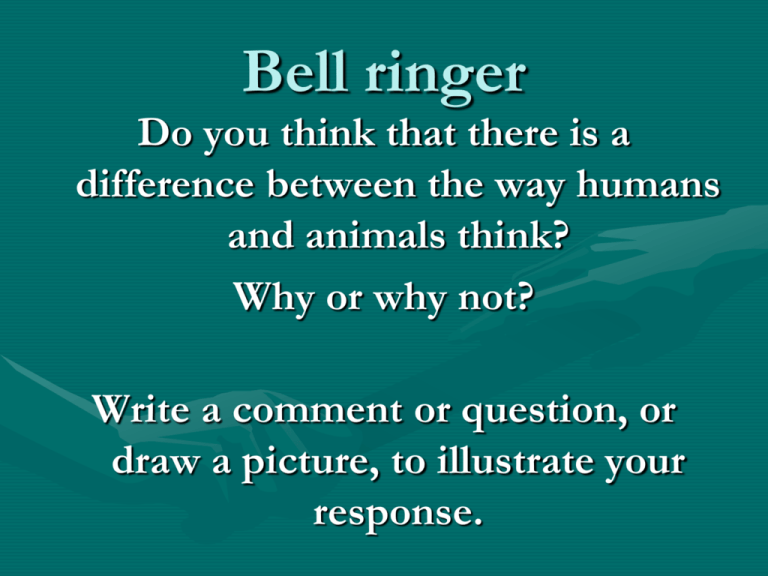
Bell ringer Do you think that there is a difference between the way humans and animals think? Why or why not? Write a comment or question, or draw a picture, to illustrate your response. Image from Google Images John B. Watson (1878-1958) “Founder of Behaviorism” By Mary Beth Bracy & Courtney (Foley) Sayward About John B. Watson • From poor family in South Carolina • Troubled youth, but managed to go to college (graduated 1889). • Majored in psychology and minored in philosophy, under John Dewey (1901). • (1903) Studied under German biologist Jacques Loeb, and became fascinated with animal studies. • (1907) Became associate professor at Johns Hopkins University. • Named editor of renowned journal Psychological Review. • Promulgated views on animalhuman psychology, which he also applied to mental illness research. • (1914) Became president of the American Psychological Association. • (1916-) Worked in advertising. Publications • (1913) Published article “Psychology as the Behaviorist Views it.” • (1914) Published Behavior: An Introduction to Comparative Psychology. • (1919) Wrote his most popular book: Psychology from the Standpoint of a Behaviorist. • (1920) Published the “Little Albert” experiment. • (1924) Published Behaviorism. • (1928) Published The Psychological Care of Infant and Child. Behaviorism • “Behaviorism assumes that behavior is observable and can be correlated with other observable events. Thus, there are events that precede and follow behavior (Cooper, 2009).” • Psychology should be grounded in science when examining the connection between the environment and behavior. • Ideas controlling human and other animal behavior are basically the same. More on Behaviorism • Influenced by Pavlov’s experiments (e.g., causing dogs to salivate at the sound of a noise). • Watson experimented on animals and children. His most famous study was titled “Little Albert.” http://www.youtube.com/watch?v=M2Ns3WViaXw&feature=fvw Behaviorist Conclusions • Humans are conditioned. For instance, in the “Little Albert” experiment the toddler was conditioned to fear the rat by adding the noise. Later, this was also extended to other furry objects (e.g., Santa beard and Watson’s hair). • Watson asserted that thinking is not conscious behavior. It is merely talking to yourself. Positive Instructional Implications • If behavior is conditioned, there is amazing potential for teachers to positively influence their students by good example, quality lessons and learning. • Watson believed that practice strengthens learning. • His work was considered the beginning of the development of learning science. Criticism • Behaviorism has been criticized for Social-Darwinian implications (e.g., conditioning the masses and survival of the fittest). • "Give me a dozen healthy infants, well-formed, and my own specified world to bring them up in and I'll guarantee to take any one at random and train him to become any type of specialist I might select--doctor, lawyer, artist, merchant-chief, and, yes, even beggarman and thief, regardless of his talents, penchants, tendencies, abilities, vocations, and race of his ancestors. I am going beyond my facts and I admit it, but so have the advocates of the contrary and they have been doing it for many thousands of years." –John B. Watson, Behaviorism, p. 104. References • Cohen, D. (1979). J. B. Watson: The Founder of Behaviourism. London: Routledge & Kegan Paul Ltd. • Cooper, S. (2009). John B. Watson (1878 to 1958) Behaviorism. Retrieved from http://www.lifecirclesinc.com/Learningtheories/behaviorism/Watson.html • Green, C. D. (2009). Classics in the history of Psychology: Introduction to “Psychology as the Behaviorist Views It” John B. Watson (1913). Retrieved September 9, 2010, from http://psychclassics.yorku.ca/Watson/intro.htm • Watson, J. B. (1957). Behaviorism (New ed.). Chicago, IL: University of Chicago Press. NATURE VS. NURTURE
